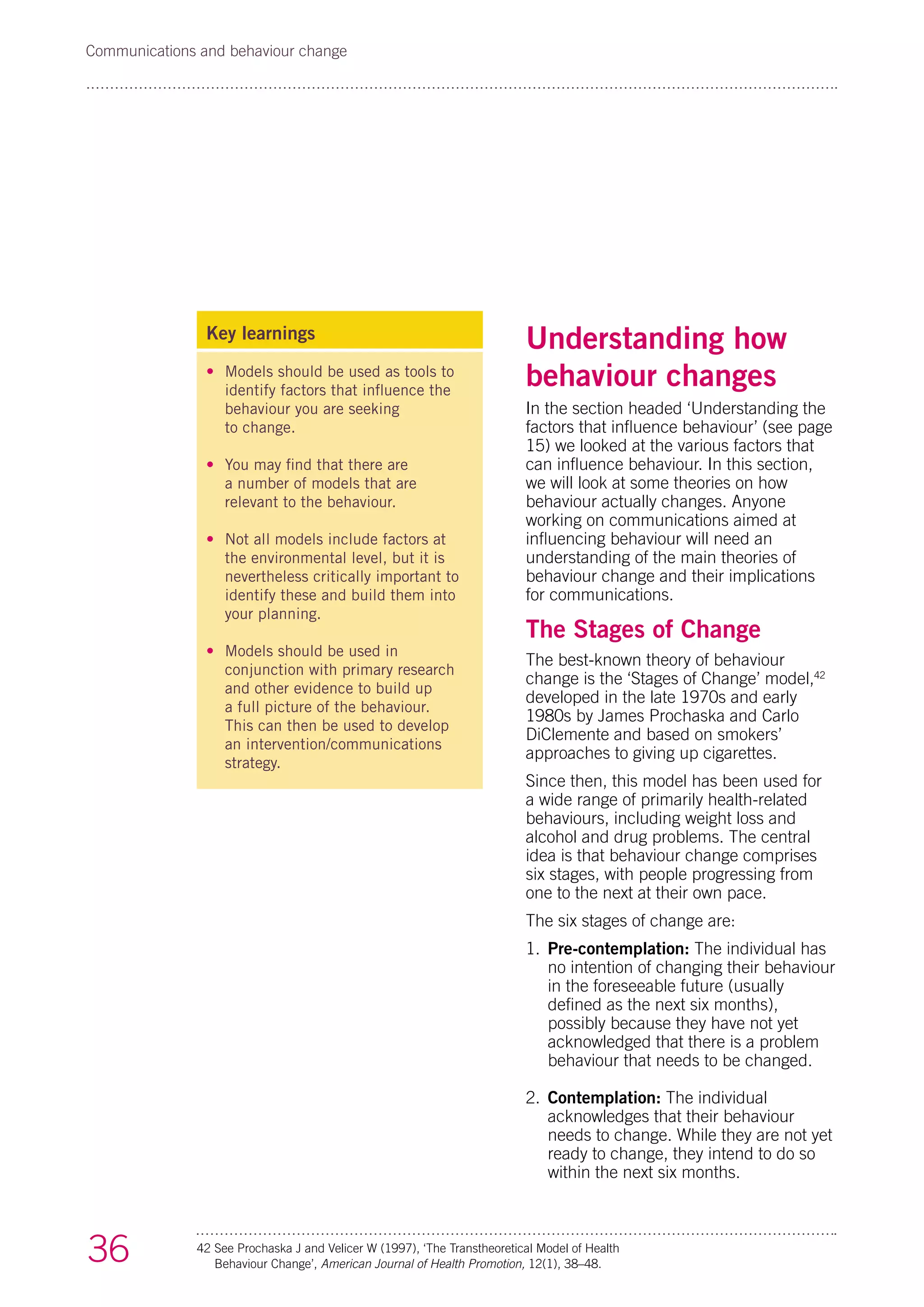This document summarizes a longer document about factors that influence human behavior and how understanding these factors can help develop effective communications strategies. It discusses three levels of factors - personal, social, and environmental - that influence behavior according to social psychology models. Personal factors include knowledge, attitudes, habits, and self-efficacy. Social factors include social norms, social support and identity. The document also provides an overview of behavioral economics principles and theories of behavior change. It emphasizes the importance of understanding how multiple factors at all levels can influence a behavior when developing communications to change behaviors.





































































